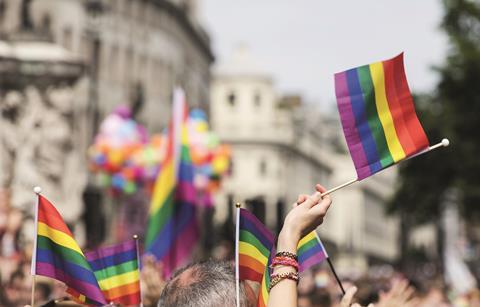This November marks the 20th anniversary of the cessation of Section 28. Introduced by Margaret Thatcher’s government in 1988, the legislation saw a series of laws rolled out across Britain that prohibited the ‘promotion of homosexuality’ by local authorities.

Fast-forward to 2023, and the tide has largely turned; we continue to see the LGBTQ+ community championed by both people and places.
This, however, has been a relatively slow process and it is only now, in the 21st century, that we have seen the real estate industry fully embrace diversity and inclusion. Perhaps most significant for those in property was the creation of the networking body Freehold in 2011, which has since grown to become one of the leading voices of the LGBTQ+ community for property professionals.
Groups like this, and others such as Planning Out and Building Equality, have successfully advocated for community representation within the industry. They have provided platforms for networking, mentorship and lobbying, as well as a means through which visible role models have been able to pave the way for future generations.
We are now seeing diversity, inclusivity and social value rise up the place-shaping agenda
We have also seen greater recognition of queer spaces. For example, in 2016 Historic England launched Pride of Place, which uncovers and celebrates places of LGBTQ+ heritage across England, ranging from the frontiers of Roman Britain to the gay pubs and clubs. This brought together social and architectural historians with urban planners, with the aim of harnessing public engagement in order to create a permanent record of these places.
This coincided with the listing of the Royal Vauxhall Tavern, south London’s oldest surviving gay venue, as a grade II-listed building and a place of cultural significance on the advice of Historic England.

Building on this idea was the publication of a report by Arup in 2021 called Queering Public Spaces, which gave an insight into the relationship between LGBTQ+ communities and places. This followed research from Galop and Stonewall that found 50% of people recognised that LGBTQ+ people changed their behaviour out in public to avoid hostile targeting, while transgender people avoided certain areas altogether.
The report ultimately calls for an urgent rethink of how towns and cities are designed, providing recommendations for how they can be made more inclusive for all.
Some of London’s major schemes have already started putting this into practice. Argent’s King’s Cross, for example, saw the opening of Queer Britain in 2022, the UK’s first LGBTQ+ history museum. Including galleries, a workshop and education spaces, it offers free entry as a way for visitors to discover the stories and experiences of LGBTQ+ people. Outside London, we see the flourishing of cultural movements like Homotopia, a Liverpool-based arts and social justice organisation making a cultural impact in the city through art and activism.
Ultimately, 2023 is a year for celebrating 20 years of progress. In the past two decades, we have seen LGBTQ+ culture become a part of everyday life in a way that has positively affected the built environment, both physically and culturally. We are now seeing diversity, inclusivity and social value rise up the place-shaping agenda and it is with cautious optimism that we hope this will become a given, rather than an exception to the rule.
Adam Bray is director of customer and place strategy at Savills





























No comments yet